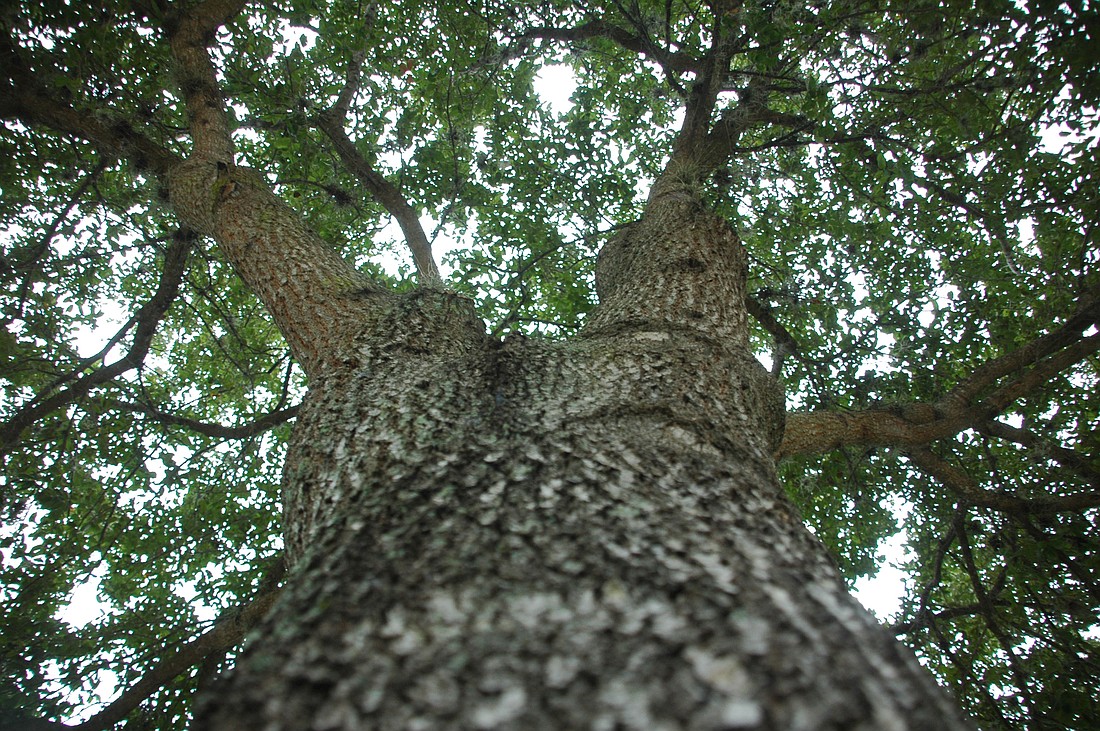- December 13, 2025
-
-
Loading

Loading

Winter Park City Commissioners and staff discussed a new approach to managing trees during the Oct. 14 City Commission meeting in response to the vast number of dying trees in the city – a problem that could change the face of the city’s tree canopy for decades.
City Arborist Dru Dennison reported to Winter Park City Commissioners that at least a third of the tree canopy along city streets needs to come down for safety reasons, putting 10,000 to 13,000 trees along the city’s public right of ways on the chopping block.
She stressed that the true number of dead trees could be even higher, as the city still needs to complete an evaluation of every tree.
“Hopefully we will have a complete updated inventory; at that point in time we will be able to evaluate the trees in a more manageable way,” Dennison said. “We will have routine maintenance pruning cycle, but we don’t know what that will be yet.”
Research shows that it will take several decades for the canopy to regain what it loses once the trees are cut down. According to Arborday.org, an average 60-foot-tall live oak tree takes between 30 to 60 years to reach its maximum height.
The jolting estimate made by Dennison came up during a discussion of the Urban Forestry Management Plan, a city effort currently in the pipeline that hopes to mitigate the dead tree issue by effectively removing dead trees and carefully planting and trimming new ones.
The report sparked a discussion among the Commissioners on the best way to deal with trees moving forward.
“What I’m hoping for is that this Urban Forest Plan will direct us as to what trees we replace those trees with and how we maintain them going into the future so we don’t end up with a scenario like this,” said Commissioner Tom McMacken.
“It’s costing the city literally hundreds of thousands of dollars to make up for what I consider some past poor decisions.”
City staff has been crafting the Urban Forestry Management Plan for more than a year, gathering an inventory of the trees and establishing how trees along public right of ways will be taken care of.
Commissioner Sarah Sprinkel said that it’s high time the plan reached completion.
“We’re adding money to it and still working on this plan, but we kind of need to decide how it’s going to work.” Sprinkel said.
“I’m ready to make some decisions.”
Commissioners discussed what constitutes as trimming, what counts as a hazardous tree, and the issue of tree diversity, with Mayor Ken Bradley suggesting that residents should be able to choose whatever type of tree they wish to replace a dying one with along public streets, as long as it blends in with the character of Winter Park.
“I’m convinced from information I’ve received in citizen comment that some diversity is important,” Bradley said.
But McMacken strongly suggested that the city focus on live oak trees for their canopy wherever possible due to their long life span of 150 years or more.
Bradley remained optimistic that the discussion moved the Urban Forestry Management Plan that much closer to getting off the ground.
“I would argue that we’re a lot closer than we’ve ever been to having a true urban forestry management plan,” said Mayor Ken Bradley.
“If this isn’t done before Thanksgiving, then I think we’ve done something wrong.”
The City Commission asked city staff to bring forward a “complete, holistic” plan for recommendation.